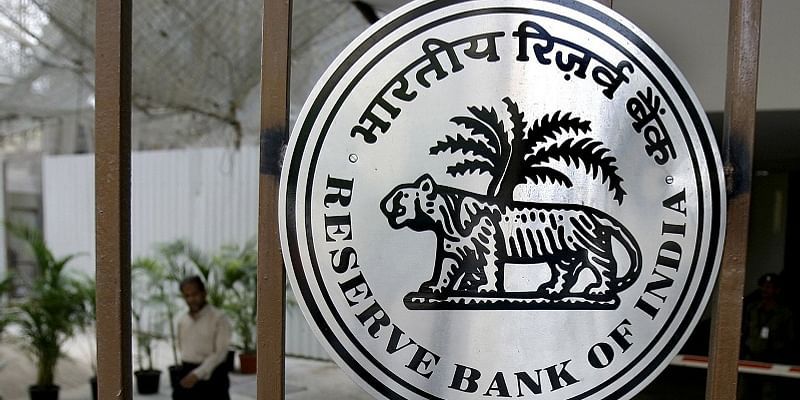[TechSparks 2020] Unpacking the future of India’s fintech at the country’s biggest startup-tech event
TechSparks, India's most awaited startup and innovation event is back October 26 to 30, and this time it’s virtual, global, and immersive. The fintech track is set to feature a lot of industry bigwigs while unpacking what’s going on in the sector, and what lies ahead.
TechSparks 2020 is here, and this time, it’s bigger, better, and virtual. The all-immersive global event, to be held from October 26 to 30, is one of India’s most influential startup and innovation events.
This year, TechSparks will see masterclasses, workshops, and speakers from around the world — with a more ‘glocal’ perspective to highlight Made in India startups, innovations, ideas, and industry themes as the ecosystem strives to heed to Prime Minister Narendra Modi’s clarion call for an Aatmanirbhar Bharat.
At TechSpark’s fintech track this year, we’ll hear from leading names in the industry, including Kunal Shah, Founder and CEO of ; Nithin Kamath, Co-founder and CEO of ; Vinay Bagri, Co-founder and CEO of ; Manish Patel, Founder and CEO of Mswipe; and more, on some of the most pressing issues concerning the fintech industry in India.
Technology permeates more than just our social lives and consumer needs, and it is now evident that legacy businesses either have to swim with changing tides or sink.
Some of the most important tech innovations over the last decade have been in finance, as consumers moved from carrying cash to using non-physical and mostly-virtual money to conduct transactions online. Money itself has changed because of fintech as have aeons-old concepts of lending and borrowing.

In India, homegrown players like , , CRED, , , and , among others, have led the fintech revolution. Having put up a good fight against international players, these startups have successfully snagged valuable market shares from them.
In fact, India has been so successful in deploying fintech services that not only are our adoption rates the second-highest in the world at 59 percent, but UPI — an India-made product — has also become a blueprint for safety in the world of financial services.
Here are some broad strokes on what one can expect to hear at the fintech track at TechSparks 2020.
Financial inclusion in India
Between 2014 and 2018, Indians with a bank account and access to financial services rose from 54 percent to 81 percent, according to Findex. This growth in numbers came from banking and economic reforms over those years.
Perhaps the biggest fillip to the fintech revolution in India came from the government’s Digital India initiative, where regulatory bodies efforted to digitise processes necessary to facilitate financial inclusion — PAN cards, cards, GST, and online KYC — to help people get quicker access to services.
Today, with the cheapest data plan in the world, financial technology startups and digital banking service providers in India are staring at yet another boom in financial services on the horizon, especially as the country takes note of PM Modi’s aatmanirbhar and ‘Vocal for Local’ calls.
Startups have already begun reporting that their services are seeing increased traction in lower-tier cities and rural India, with some even banking on those geographies to provide a shot in the arm.
In fact, over the last couple of years, fintech startups that specifically focus on traditionally unbanked populations such as people in the rural areas, economically disadvantaged communities, small businesses, and merchants, as well as SMEs/MSMEs have grown faster than those that solely target the urban population.

Image Source: Shutterstock
Digitising wealth management in India
Paytm recently launched stockbroking services for retail investors on its platform and said nearly 60 percent of the demand for its investment products came from Tier-II and III cities. And that has been a trend across fintech platforms.
Coupled with demand from lower-tier cities and from millennials — a new, financially savvy population actively looking at ways to generate passive wealth — more and more fintech players are getting into the retail investment space to bring previously out-of-reach investment banking services to the general public on friendlier, cheaper platforms. While Zerodha and Paytm Money are leaders in the space, others like PhonePe are not too far behind.
With so many options available to people for investing today, startups are trying to bolster their presence and differentiate themselves from others by offering features such as robo-advisors, curated investment products based on a user’s preferences, and access to industry research tools, among others.
This is an exciting space to watch especially since the industry is in the throes of a boom.
Growth in digital lending
With the introduction of digital tools such as e-KYC, online credit scores, and heightened data security, retail digital lending has increased manifolds in India. From Rs 2.7 trillion in 2019, online loans are expected to more than double to Rs 15 trillion by 2024, according to a joint report by ICICI Bank and CRISIL.
The digital lending sector itself is expected to account for 16 percent of retail loans over the next five years, up from six percent in 2019.
Digital loans are more in demand than traditional bank loans because of their quicker turnaround times, less extensive paperwork, and more transparency. These loans, even though they are backed by and essentially provided by banking institutions, are all disbursed digitally, thereby saving people time and helping them get access to capital faster.
The industry is at an interesting point because with so many legacy lending options already available and adapted into digital formats, online lenders are becoming creative in introducing new debt products to their customers.
From peer-to-peer lending and chit-fund style loans to crowdfunded financing, startups in India are crossing legacy-format boundaries to devise new products powered by technology.
At TechSparks 2020, we will strive to understand the driving force behind this need for new lending products, how digital lenders are de-risking themselves to be financially sound enough to get behind some of these instruments, and if this creative thinking is coming to business finance too.

Some other areas we hope to explore at TechSparks 2020 include:
- Fintech for small businesses and how it’s changing the landscape for SMEs and MSMEs
- Where the payments industry is going: what’s beyond QR codes, mobile phone transfers, and UPI
- Banking 2.0: How fintech is changing the face of institutional banking, and also forcing a digital revolution in smaller banks
- Next in fintech: How wearables, gamification, and voice banking is levelling up the fintech industry
- The future of banking: What will banking services in the future look like? Insurance marketplace platforms already let you compare various insurance policies before buying — is that going to come to banking too? Will banks need to offer non-financial services to play a bigger role in users’ daily lives? Paytm is already doing this by making their app more consumer-friendly by offering various other services on a single platform — is that the new industry format?
- Customer experience in banking — what’s the next wave in customer experience for fintech? How are new-age technologies like AI/ML/chatbot making a difference?
- COVID-19’s impact on the fintech industry
- Fintech strategy for the next billion Indians — how are fintech planning to reach them, what are some of their unique needs and requirements, and what is stopping them from using existing technologies?
Register for TechSparks, and buy your tickets here!
Edited by Saheli Sen Gupta






![[TechSparks 2020] Unpacking the future of India’s fintech at the country’s biggest startup-tech event](https://images.yourstory.com/cs/2/604090802d6d11e9aa979329348d4c3e/TS-Article-BannersFintech-1602036642894.png?mode=crop&crop=faces&ar=2:1?width=3840&q=75)




![[Weekly funding roundup April 20-26] VC investment dips as startups resort to debt capital](https://images.yourstory.com/cs/2/220356402d6d11e9aa979329348d4c3e/funding-lead-image-1669386008401.jpg)

![[Jobs Roundup] These openings may help you land a role in business travel SaaS startup ITILITE](https://images.yourstory.com/cs/2/ba9e8080834311ec9e7e95cb06cf6856/ITILITEnewfinal-1650268200560.png)

